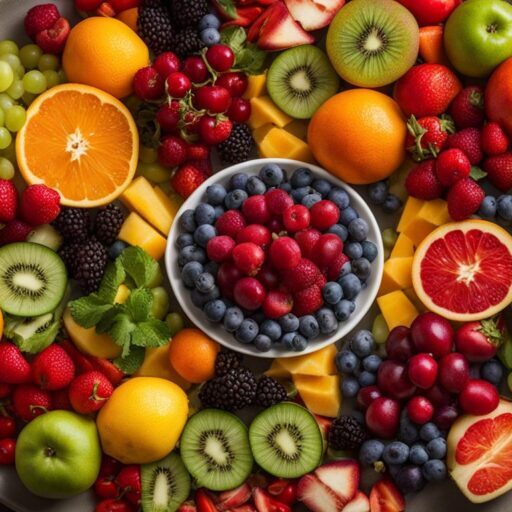Plasmalogens are bioactive lipids that play a vital role in maintaining cell membrane integrity and have powerful anti-inflammatory effects.
In the intricate dance of molecules within our body, plasmalogens are the unsung heroes, holding profound secrets to cellular health, brain function, and potentially unlocking new avenues in the fight against chronic diseases.
Introduction
Plasmalogens are a special class of phospholipids that have yet to gain broad recognition despite their profound importance for human health. Characterized by their distinctive vinyl ether bond at the sn-1 position, plasmalogens have a unique structure that enables specialized properties and bioactivities unmatched by other phospholipids. As critical constituents of cell membranes, plasmalogens help regulate membrane dynamics and protect cells from oxidative damage.
Additionally, plasmalogens play signaling roles implicated in neurological health, cardiovascular function, immune response, and more. Deficits in plasmalogens have been associated with serious illnesses, including Alzheimer’s, heart disease, and autoimmunity. This highlights the vital need to understand plasmalogens and how to maintain optimal levels through dietary sources.
In this article, we will explore the biological functions of plasmalogens, highlight their importance in disease prevention, and provide guidance on nutrition strategies for sufficient plasmalogen intake. Keep reading to learn more about how this unique class of little-known lipids holds the key to foundational wellness and vibrant health as we age.
What are Plasmalogens?
Plasmalogens are a type of phospholipid that have a unique structural feature – a vinyl ether bond at the sn-1 position of the glycerol backbone. This unique composition sets them apart from other phospholipids and gives them distinct properties and functions.
Unlike conventional phospholipids, plasmalogens have a higher content of unsaturated fatty acids. This increased unsaturation contributes to their fluidity and flexibility, allowing them to participate in various cellular processes.
Plasmalogens have a crucial role in maintaining cell membrane integrity and fluidity. They also play a specific role in cellular signaling and other biological functions, making them essential for overall health and well-being.
Plasmalogens are a unique class of membrane glycerophospholipids containing a fatty alcohol with a vinyl-ether bond at the sn-1 position, and enriched in polyunsaturated fatty acids at the sn-2 position of the glycerol backbone. These two features provide novel properties to these compounds. Although plasmalogens represent up to 20% of the total phospholipid mass in humans their physiological roles have been challenging to identify, and are likely to be particular to different tissues, metabolic processes and developmental stages.(Braverman 2022)
The Biological Role of Plasmalogens
Plasmalogens play several vital functions in the human body. One of their key roles is maintaining the fluidity and flexibility of cell membranes, which is crucial for various cellular processes. By contributing to membrane integrity, plasmalogens ensure that cells can carry out essential tasks efficiently.
Another important biological role of plasmalogens is their ability to protect cells against oxidative stress. Plasmalogens possess antioxidant properties, which help to neutralize harmful reactive oxygen species and prevent damage to cellular structures.
Plasmalogens play a crucial role as endogenous antioxidants, protecting other PL, lipid and lipoprotein particles from oxidative stress [48]. This is due to the fact that the vinyl ether bond is preferably oxidized, while protecting the polyunsaturated fatty acids present in the sn-2 oxidation position [55]. As the hydrogen atoms adjacent to the vinyl ether bond have relatively low dissociation energy, they end up being oxidized when exposed to various oxidizing reagents (peroxyl radicals, metal ions, UV light, singlet oxygen and halogenating species) [58]. Consequently there is consumption of plasmalogens in the reaction and the polyunsaturated fatty acids and other membrane lipids are spared from oxidation, suggesting the role of sacrificial oxidant for plasmalogens [7]. (Messias 2018)
In addition to membrane fluidity and oxidative stress protection, plasmalogens are also involved in cell signaling. They play a part in regulating important cellular pathways and orchestrating appropriate responses to external and internal stimuli.
Heart Health
Plasmalogens play a significant role in maintaining heart health and supporting the proper functioning of the cardiovascular system. They contribute to the integrity of heart cell membranes, which is essential for the normal functioning of the heart. Plasmalogens also have an impact on cholesterol metabolism, helping to prevent the accumulation of cholesterol in blood vessels, which can lead to cardiovascular diseases. Additionally, plasmalogens provide protection against oxidative damage, which is crucial for maintaining the overall health of the heart.
Neurological Health
Plasmalogens play a crucial role in maintaining neurological health. They are essential for proper brain function and cognitive health. Studies suggest that plasmalogen deficiencies may contribute to cognitive decline and neurodegenerative diseases, such as Alzheimer’s disease.
Plasmalogens are involved in various processes in the brain, including synaptic function and the protection of neurons. Their presence and proper levels are crucial for overall neurological well-being, supporting cognitive abilities and maintaining brain health.
The special glycerophospholipids plasmalogens (Pls) are enriched in the brain and reported to prevent neuronal cell death by enhancing phosphorylation of Akt and ERK signaling in neuronal cells. Though the activation of Akt and ERK was found to be necessary for the neuronal cells survival, it was not known how Pls enhanced cellular signaling.
…our present study suggests that Pls-signaling is associated with GPCR proteins in neuronal cells which might be important in regulating the cellular signaling to maintain effective neuronal activity in the brain. (Hossein 2016)
Akt and ERK are protein kinases involved in critical cellular processes like growth, proliferation, and survival. Activation of Akt and ERK occurs through phosphorylation and leads to phosphorylation of downstream targets that regulate neuronal cell function and viability.
GPCRs are cell surface receptors involved in many signaling cascades.
In summary, accoording to Hosseins research, plasmalogens appear to interact with and activate specific GPCR proteins in neurons. This then enhances Akt and ERK signaling, which has known neuroprotective effects. This sheds light on the upstream mechanisms underlying how plasmalogens maintain neuronal cell health, viability, and brain function.
Dietary Sources of Plasmalogens
Plasmalogens, essential for human health, can be obtained through dietary sources. Including foods high in plasmalogens in your diet can help support plasmalogen levels and contribute to overall well-being.
Foods High in Plasmalogens
There are several foods that are rich in plasmalogens. These include:
Seafood
Seafood, particularly cold-water fish like salmon and mackerel, is a great source of plasmalogens. These fish contain high levels of these beneficial phospholipids, making them an excellent choice for supporting plasmalogen levels through your diet.
Organ Meats
Organ meats, such as liver, are also rich in plasmalogens. These meats provide a concentrated source of this important class of phospholipids. Including organ meats in your diet can help ensure an adequate intake of plasmalogens.
Eggs
Eggs, particularly the yolks, are another dietary source of plasmalogens. Including eggs in your meals can provide a natural supply of these beneficial compounds, contributing to your plasmalogen levels.
By incorporating seafood, organ meats, and eggs into your diet, you can increase your intake of plasmalogens and support your overall health.
Enhancing Plasmalogen Production
Importance of Diet in Plasmalogen Levels
The diet plays a crucial role in maintaining optimal plasmalogen levels in the body. Consuming a diet rich in nutrients and compounds that support plasmalogen biosynthesis is essential for enhancing plasmalogen production. By incorporating specific foods and supplements into your diet, you can support the synthesis and availability of plasmalogens.
Nutrients and Compounds for Plasmalogen Biosynthesis
Several key nutrients and compounds are necessary for the biosynthesis of plasmalogens. Choline, serine, and omega-3 fatty acids are among the essential components that support the production of plasmalogens. Choline is found in foods like eggs, liver, and fish, while serine is present in meat, poultry, and dairy products. Omega-3 fatty acids can be obtained from fatty fish, walnuts, flaxseeds, and chia seeds.
Natural Compounds and Foods for Plasmalogen Production
In addition to specific nutrients, certain natural compounds and foods have been found to enhance plasmalogen production.
Polyphenols, which are abundant in fruits, vegetables, and beverages like tea and coffee, have been shown to have a positive impact on plasmalogen synthesis.
(Check our Polyphenol Food Chart for foods with the highest Polyphenols.)
Furthermore, incorporating plasmalogen-rich foods such as seafood, including cold-water fish like salmon and mackerel, into your diet can support plasmalogen production.
Key Nutrients for Plasmalogen Synthesis
To ensure optimal plasmalogen synthesis, it is vital to prioritize certain key nutrients in your diet.
Choline, a nutrient found in various animal-based and plant-based foods, helps promote plasmalogen biosynthesis.
Serine, another crucial nutrient, is found in meat, poultry, and dairy products.
Omega-3 fatty acids, abundant in fatty fish and plant-based sources like flaxseeds, are essential for supporting plasmalogen production.
Antioxidant Support
Plasmalogens benefit from antioxidant support to maintain their integrity.
Aging, stress, and inflammatory stimuli reduced the Plasmalogen’s contents in cells, and addition of Plasmalogens inhibited inflammatory processes, which could suggest that reduction of Plasmalogens might be one of the risk factors for the diseases associated with inflammation. (Hossein 2020)
Vitamins E and C are known antioxidants that play a crucial role in protecting plasmalogens from oxidative damage.
Role of Vitamins E and C in Protecting Plasmalogens
Vitamins E and C have been recognized for their antioxidant properties, making them essential for the protection of plasmalogens.
Vitamin E helps neutralize free radicals, which can cause damage to plasmalogens and other important cellular components. Vitamin C, on the other hand, regenerates vitamin E to its active form, ensuring a continuous antioxidant defense for plasmalogens.
Foods Rich in Antioxidants that Support Plasmalogen Integrity
Including foods rich in antioxidants in your diet can contribute to the support and maintenance of plasmalogen integrity. Fruits and vegetables, particularly those with vibrant colors, are excellent sources of antioxidants. Berries, leafy greens, citrus fruits, and bell peppers are just a few examples of antioxidant-rich foods that can enhance plasmalogen protection and overall cellular health.
Conclusion
Plasmalogens, a unique class of phospholipids, play a crucial role in promoting overall human health. Their benefits extend from the heart to the brain, making them indispensable for optimal well-being.
In terms of heart health, plasmalogens contribute to the integrity of heart cell membranes and help regulate cholesterol metabolism. By maintaining the fluidity and flexibility of cell membranes, plasmalogens support the proper functioning of the cardiovascular system and help prevent the buildup of cholesterol in blood vessels, promoting a healthy heart.
When it comes to brain health, plasmalogens are equally important. They are vital for brain function and cognitive health, playing a role in processes such as synaptic function and neuron protection. Deficiencies in plasmalogens have been associated with neurodegenerative diseases like Alzheimer’s, highlighting their significance in maintaining a healthy brain.
To support the levels of plasmalogens in the body, it is advisable to include plasmalogen-rich foods in the diet. Seafood like cold-water fish (salmon, mackerel), organ meats (liver), and eggs (especially the yolks) are excellent sources of plasmalogens.

Additionally, as most of our plasmalogens are manufatured within the body, a diet should incorporate appropriate amounts of nutrients and compounds, such as polyphenols, choline, serine, omega-3 fatty acids, vitamins E and C, and other antioxidants, can further support plasmalogen synthesis and protect plasmalogen integrity.
Recent research (see Honshu 2023) points to small molecules that can enhance the expression of key enzymes like GPD2 and FAR1, as well as inhibitors of ATP8B2, as a strategic approach to boosting plasmalogen levels. It is possible that polyphenols, Omega 3 Fatty Acids, Phytosterols, Curcumin and Sulphoraphane that support Plasmalogen expression in the body, may be shown to be impacting these cellular signaling pathways.
Another recent paper found that plasmalogens activate the wnt/β-catenin pathway:
AD mice were supplemented with PLA (Plasmalogen) (67mg/kg/day) for 6 weeks. PLA treatment improved the impaired AHN (Adult hippocampal neurogenesis ) in AD mice, including increasing the number of neural stem cells (NSCs) and newly generated neurons. The memory function of AD mice was also enhanced after PLA administration. Therefore, it was summarized that PLA could regulate NSC differentiation by activating the Wnt/β-catenin pathway and ameliorate AD-related memory impairment through up-regulating AHN. (Li 2023)


